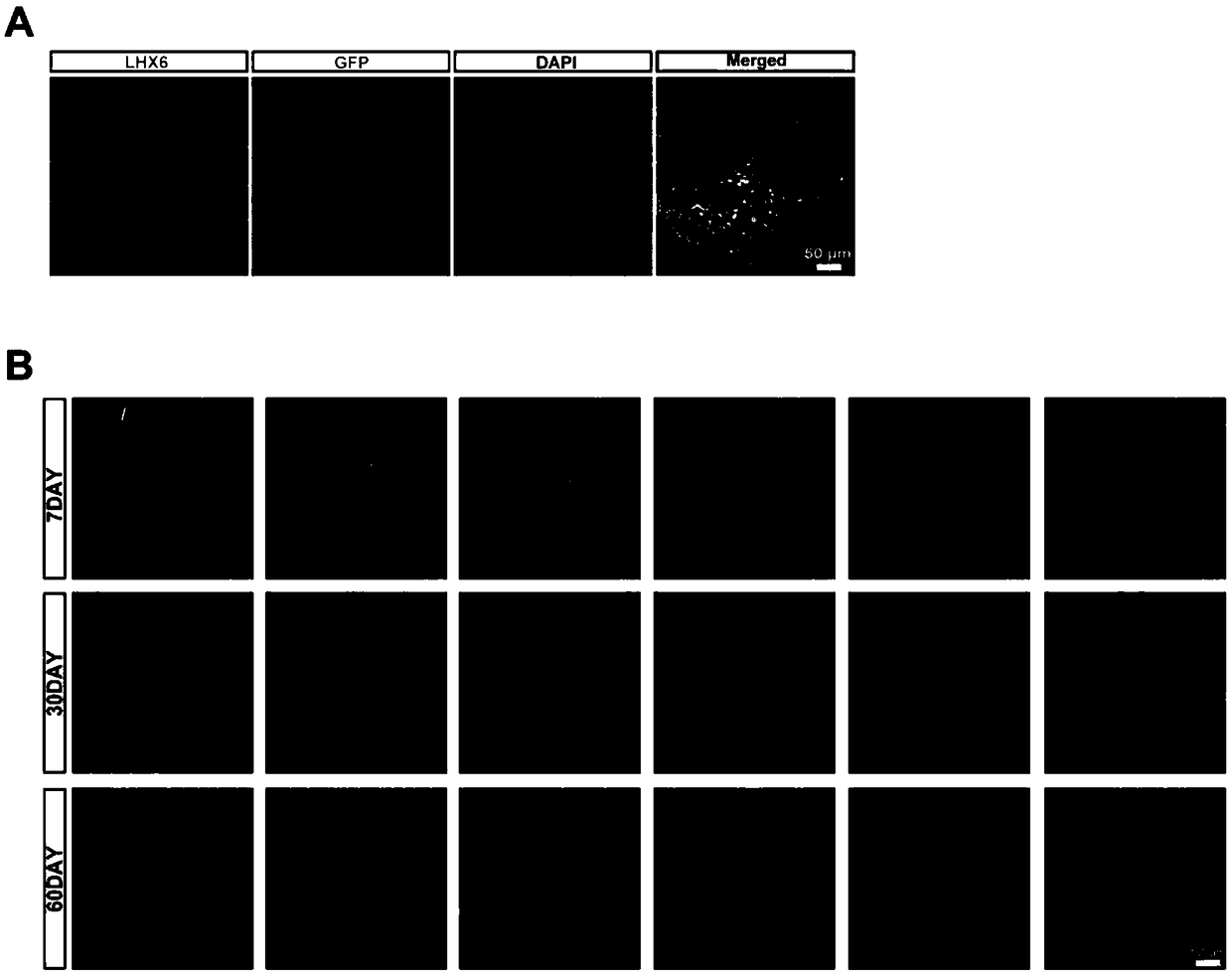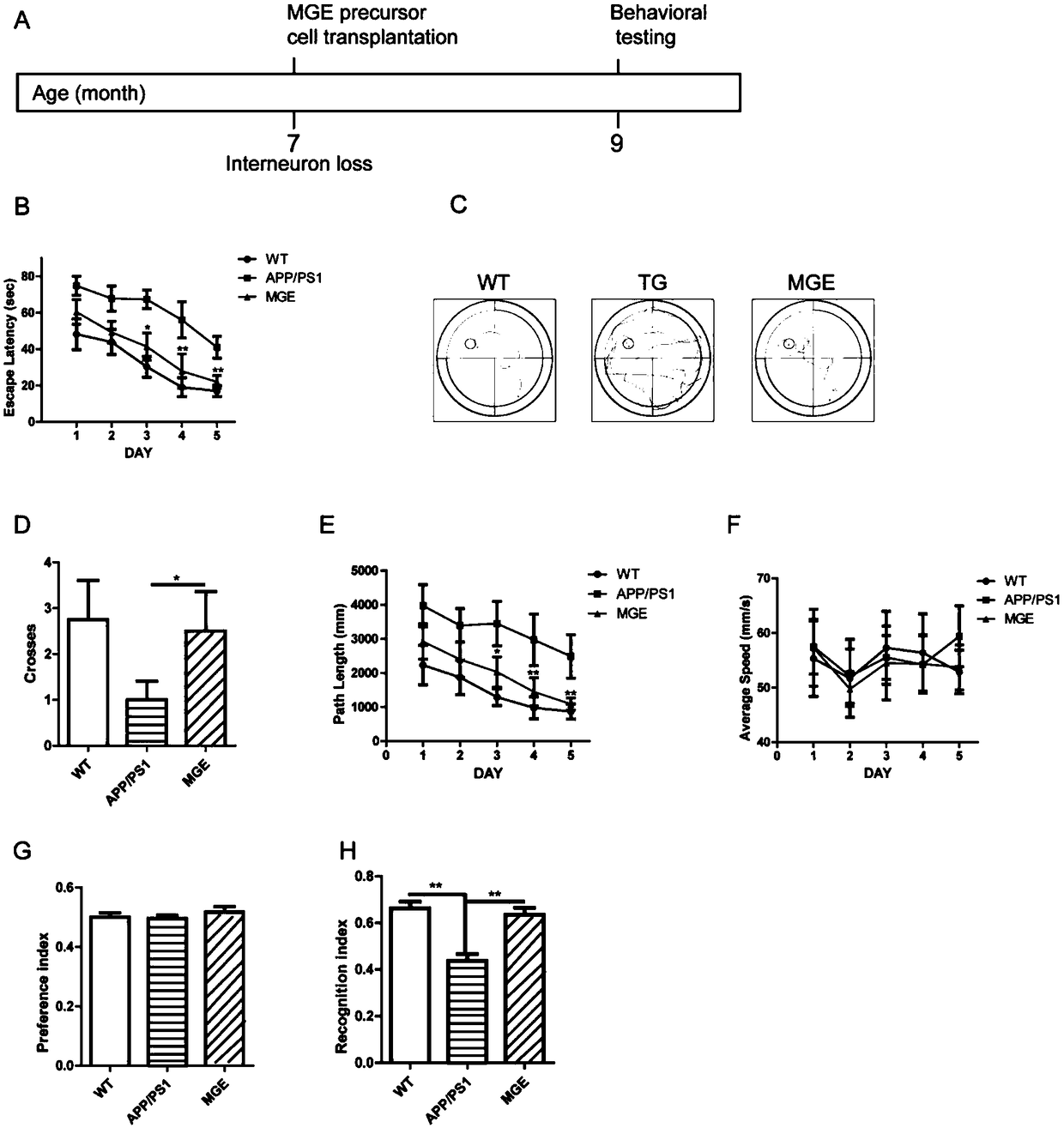Application of inhibitory neural precursor cell to preparation of drug for treating Alzheimer's disease
A neural precursor cell, Alzheimer's disease technology, applied in the field of medicine, to achieve the effect of improving cognitive impairment and maintaining balance
- Summary
- Abstract
- Description
- Claims
- Application Information
AI Technical Summary
Problems solved by technology
Method used
Image
Examples
Embodiment 1
[0022] Example 1 Obtaining MGE-derived inhibitory neural precursor cells
[0023] This technology uses green fluorescent protein-labeled mice as donors, and the transplanted inhibitory intermediate precursor cells can be visually observed in subsequent experiments. The 13.5-day pregnant EGFP mouse was taken out of the cage, and anesthetized with 3.6% chloral hydrate, 0.01ml / g. After anesthesia, sterilize the whole body with alcohol and put it in an ice box, quickly take out the fetal mouse and put it in 4-degree LiebovitzL-15 medium. After the placenta is peeled off, put the fetal mouse into a new petri dish. Use a new set of tweezers to peel off the scalp, periosteum, and meninges sequentially under a dissecting microscope, and put the brain into another Petri dish. Adjust the field of view, cut and separate the two hemispheres on the sagittal plane, and carefully remove the corpus callosum to see the situation inside the ventricle. There are 3 obvious ganglion protrusions, ...
Embodiment 2
[0024] Example 2: Transplantation of MGE-derived inhibitory neural precursor cells
[0025] This technology uses APP / PS1 mice, the classic model of Alzheimer's disease, and the background is C57BL / 6J. This double-transgenic mouse can express mutant human presenilin 1 (PS1-dE9) and human mouse amyloid precursor protein ( APPswe) fusion, the expression of these two genes are all initiated by the mouse prion protein promoter. The PS1-dE9 mutation in the human presenilin gene results from a deletion of the ninth exon of the gene. The model mice showed obvious cognitive impairment at 6-7 months. In this transplantation protocol, mice were transplanted when they were 7 months old.
[0026] The mice to be transplanted were divided into three groups: the experimental group (APP / PS1+transplanted stem cells), the experimental control group (APP / PS1), and the normal control group (WT littermates), with 15 mice in each group. Mice in the experimental control group and normal control gr...
Embodiment 3
[0028] Example 3: Successful Migration and Differentiation of Transplanted Suppressor Precursor Cells
[0029] Transplanted suppressive precursor cells can survive and migrate well ( figure 1 ) and differentiate into interneurons ( figure 2 ). Three mice were taken 5 days after transplantation for perfusion sections and immunostained with the suppressive stem cell marker LHX6, as shown in figure 2As shown in -A, most of the transplanted GFP-expressing cells are stem cells of inhibitory interneurons. Perfusion sections were performed at 7 days, 30 days and 60 days, and the sections with the same interval of 140um were taken and then immunofluorescent stained to observe the distribution of cells in the hippocampus. As shown in Figure 2-B, from left to right, the cells were continuously sliced at the same interval from the proximal end to the proximal end of the hippocampus. At 7 days, the transplanted cells did not migrate around the injection point, but it could be seen ...
PUM
 Login to View More
Login to View More Abstract
Description
Claims
Application Information
 Login to View More
Login to View More - R&D
- Intellectual Property
- Life Sciences
- Materials
- Tech Scout
- Unparalleled Data Quality
- Higher Quality Content
- 60% Fewer Hallucinations
Browse by: Latest US Patents, China's latest patents, Technical Efficacy Thesaurus, Application Domain, Technology Topic, Popular Technical Reports.
© 2025 PatSnap. All rights reserved.Legal|Privacy policy|Modern Slavery Act Transparency Statement|Sitemap|About US| Contact US: help@patsnap.com



